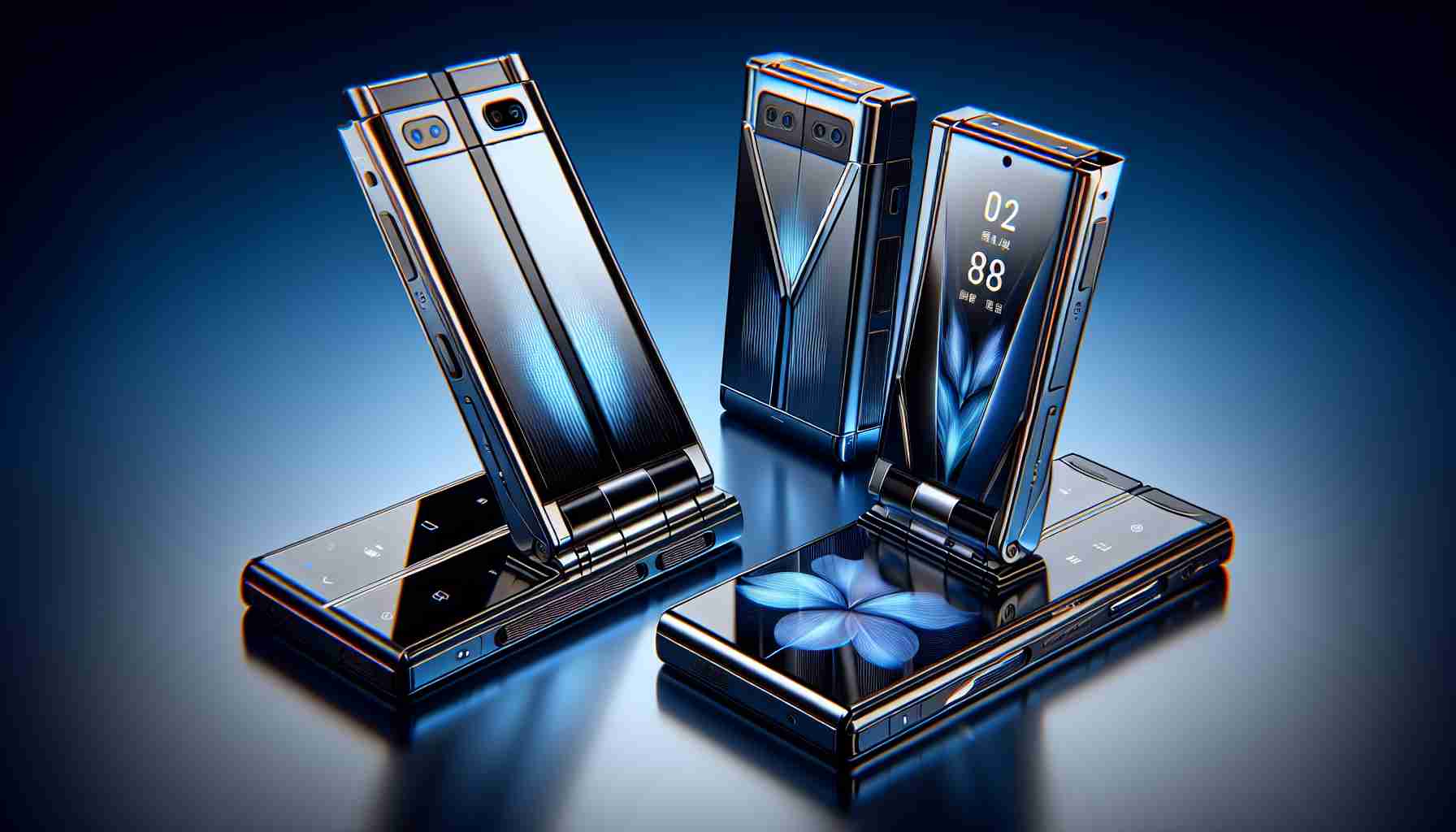Honor’s venture into the foldable clamshell arena is marked by the release of its Magic V Flip, a stylish fusion of form and function in the dynamic smartphone market. Their earlier association with Huawei, now a separate entity, brings a friendly rivalry to the foldable scene, especially with Huawei’s triple endeavor into the flip phone journey, culminated by the Huawei Pocket 2.
The artistic elements and visual experience form a primary battleground for both devices. With the Magic V Flip featuring a captivating 6.8-inch LTPO OLED display, enriched with a high refresh rate and HDR capabilities, it pairs technological prowess with cinematic brilliance. The Huawei Pocket 2 answers with a generously sized 6.94-inch screen, albeit with less luminosity.
Craftsmanship extends to the cover screens, with Honor embedding a practical 4-inch exterior display that replicates the main screen’s finesse, challenging Huawei’s minimalist 1.15-inch approach. Portability is comparable, though Honor edges out with a marginally slimmer and lighter profile, a testament to their design philosophy.
Under the hood, performance metrics reveal Honor’s allegiance to the Qualcomm Snapdragon 8 Gen 1, an esteemed chip within the high-end spectrum. Huawei’s secrecy surrounding their chosen processor leaves room for speculation, with whispers suggesting a sibling to the Mate 60 Pro’s heart.
Photography enthusiasts will deliberate over Huawei’s comprehensive quad-camera versus Honor’s dual setup, though both present the prowess of a 50MP primary shooter. Selfie and video call quality become a personal preference, between Huawei’s punch-hole front camera and Honor’s ambitious wide-angle lens.
When software takes center stage, the divergence is distinct. The Honor Magic V Flip embraces the Android ecosystem with open arms, while Huawei’s self-reliance manifests in their homebrewed HarmonyOS sparring with global preference for Google’s suite of services.
Affordability could sway decisions, with Honor’s aggressive pricing potentially appealing to the cost-conscious. Each device’s exclusivity to China’s market, however, serves as a current limitation for international consumers.
In conclusion, the Honor Magic V Flip contends strongly against the Huawei Pocket 2, especially where budget, a versatile cover screen, and allegiance to Android are key factors. Huawei’s model retains charms for those intrigued by wireless charging and a robust camera system. Choices hinge on personal priorities, in this fascinating tale of two foldables.
The article compares the Honor Magic V Flip and the Huawei Pocket 2, which are both foldable smartphones. Here are additional facts and considerations that are relevant to the topic:
Global Market Presence:
Honor, being an independent brand from Huawei, may have fewer restrictions in global markets, particularly in areas affected by trade bans on Huawei due to geopolitical tensions. This could influence the availability of the devices outside China, with Honor potentially having more freedom to market the Magic V Flip internationally compared to Huawei’s Pocket 2.
Software Ecosystem:
The use of Android on the Honor Magic V Flip means better integration with Google services and a broader range of apps available through the Google Play Store. Huawei’s HarmonyOS, on the other hand, has had to develop its own ecosystem, which may not be as extensive due to the lack of Google services. This could be a crucial factor for users outside China, where reliance on Google’s ecosystem is more prevalent.
Brand Perception:
After the split from Huawei, Honor has been working to establish its own identity and brand perception. The success of the Magic V Flip could significantly influence how consumers view Honor as an independent brand and its ability to innovate in the high-end smartphone market.
Technology Differentiation:
Both companies may be looking to differentiate themselves through proprietary technologies. For example, Huawei has made significant investments in their camera technology and HarmonyOS, whereas Honor might leverage its relationship with Qualcomm and access to Android to position itself differently.
The Most Important Questions and Answers:
1. Which device offers a better display technology?
The Honor Magic V Flip features a high-refresh-rate LTPO OLED display, while the Huawei Pocket 2 has a larger screen but with less luminosity.
2. How do the two devices compare in terms of camera quality?
Both smartphones boast a 50MP primary shooter. However, Huawei features a comprehensive quad-camera setup compared to Honor’s dual-camera configuration. The choice between the two may depend on whether the user prioritizes camera versatility or is content with the essentials.
3. What software platforms do these devices run on?
The Honor Magic V Flip uses Android, which has access to the Google Play Store and its vast app ecosystem. Huawei’s Pocket 2 runs on HarmonyOS, which does not have native Google services and has a different selection of apps.
Key Challenges and Controversies:
– The biggest challenge for both devices is the international market presence due to various restrictions, particularly for Huawei.
– There may be controversies surrounding the adoption of HarmonyOS and whether it can compete with Android’s established ecosystem.
Advantages and Disadvantages:
Honor Magic V Flip:
Advantages:
– Uses Android with access to the Google Play Store
– Has a versatile exterior display
– Features Qualcomm’s high-end Snapdragon 8 Gen 1 processor
Disadvantages:
– Only has a dual-camera setup, which may be seen as inferior to Huawei’s quad-camera system by photography enthusiasts
Huawei Pocket 2:
Advantages:
– Boasts a robust quad-camera system
– Offers wireless charging capabilities
– Has a larger screen size
Disadvantages:
– Uses HarmonyOS, which has limited support for Google services
– The external display is smaller and less functional compared to Honor’s
For more information about the brands, you can visit their official websites:
– Honor Official
– Huawei Official
It’s important to note that the information provided here relies on the context available as of the last knowledge update, and the landscape may have changed post this date.
